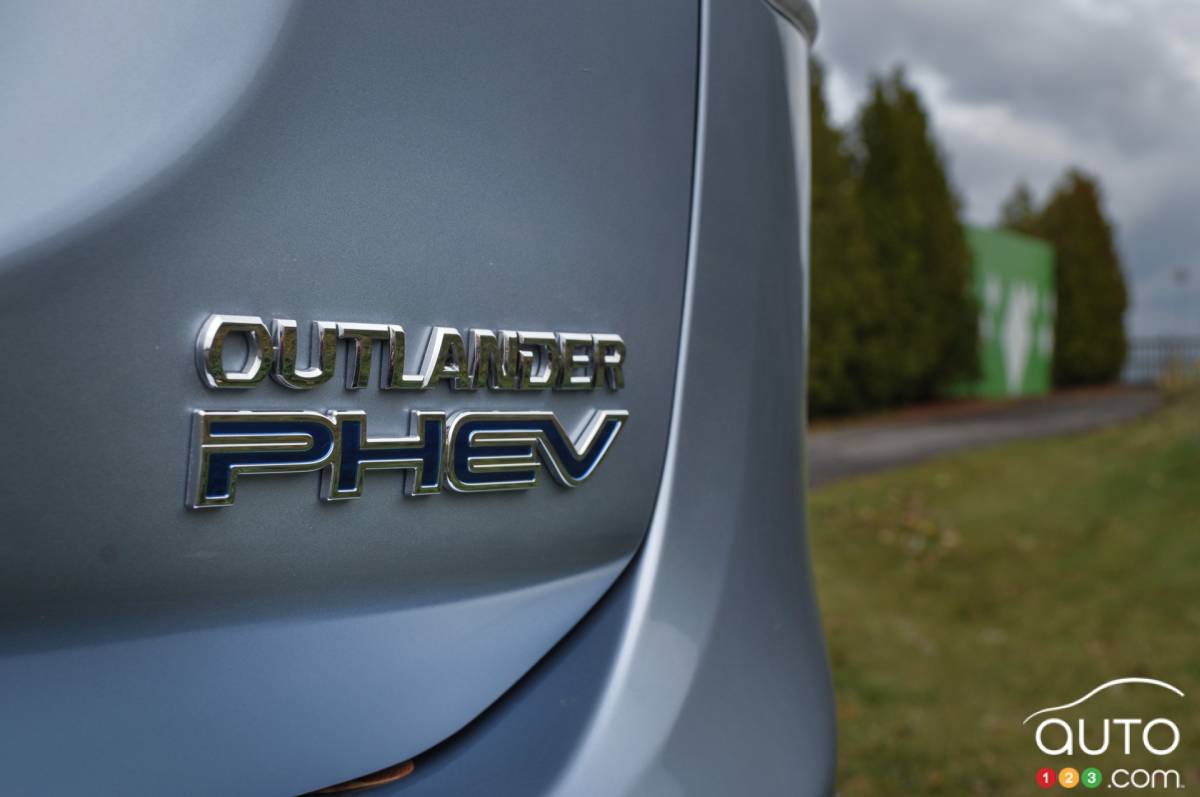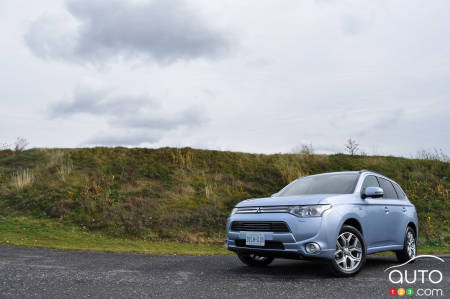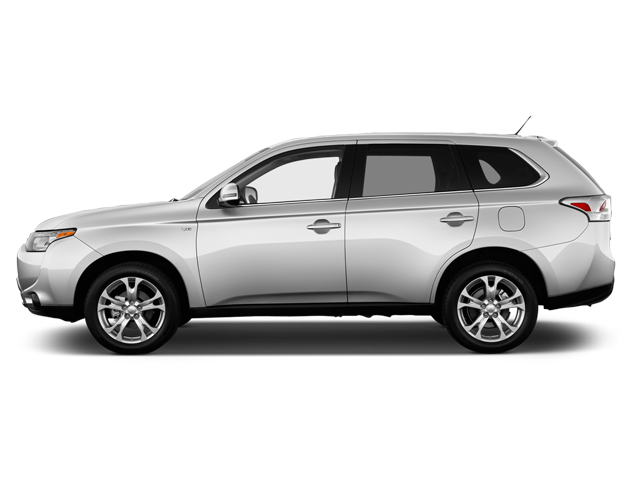I’ve lamented, along with my colleague, about how Mitsubishi has lost their way and about their inactivity in the auto industry. For the moment, let’s put all those negative thoughts aside. Let’s instead focus on the possibility that Mitsubishi may be turning over a new, green leaf and in a way the i-MiEV failed at doing, despite it’s entirely green nature.
It would seem that Mitsubishi’s future lies in a vehicle that is one of their best-selling: the Outlander. And in hybrid guise it might just offer up everything one would walk into a Mitsubishi dealership looking for, with zero compromises made.
Will we be getting the Outlander PHEV here in North America?
For the more observant of you reading this right now, you’ll be well aware that the Outlander PHEV has actually been around in other markets since early 2013. Just over 33,000 units have sold from Jan 2013 to June 2014.
Now, will we see the model I got to drive around the streets of Montreal? No. Mitsubishi assured me that technologically and mechanically the Outlander PHEV slated to land on our shores late 2015, early 2016, will be identical. However, it will look completely different.
How it drives will also differ greatly from the model I got behind the wheel of. My particular Outlander PHEV carried a Dutch passport. When the Outlander is bred for North American soil it will be tailored to suit our driving habits and roads.
How does the PHEV system work?
The system contained in the Outlander is nothing short of excessive and fairly complicated. I’m going to try and dumb it down as much as I can without sounding like a completely dumb-y myself.
Collectively, the battery, generator, and 2.0L Lancer-bred engine work together to create a system that can work in three different ways: as a full EV, as a combination of electric motor and gas engine or as a gas engine only.
For starters, there are two electric motors; one on either end of the vehicle. The unit in the rear of the Outlander PHEV is an exact match to the one found in the i-MiEV. The battery is linked to the gas engine and the generator and they work in tandem. The batteries live under the vehicle in the middle and so no interior space is eaten up in the process and the PHEV offers the same interior volume as a non-PHEV model.
Because the Outlander PHEV features Mitsubishi’s Super All Wheel Control (4WD), the rear electric motor is always pushing power to the rear wheels. The front wheels can receive power from either the electric motor or the gas engine, depending on the driving situation and what the driver is requesting the car to do.
The gas engine powers the generator that charges the battery when it’s low, and when you really give the throttle a stab, the gas engine will power the front wheels as well as help charge the battery (this also happens when you accelerate past 120km/hr).
Gas mode cannot be engaged on the Outlander PHEV under 64km/hr, and EV range is estimated at about 52km and with the 45L gas reserve European automotive journalists have recorded “diesel-like range” meaning around 700km, total.
Can the Outlander PHEV function as a full EV on a daily basis?
In theory, yes. If you work in the 50km range from work and all your essentials (grocery store, social settings, kid’s school/day care/sporting events, family) then it’s highly plausible thanks to regenerative braking and pluging your Outlander PHEV in to charge the batteries.
Of note, Mitsubishi is the only manufacturer to equip their vehicles with Stage 3 charging capabilities as standard. This means you can plug the Outlander PHEV in to a regular outlet (120V) and wait 6.5 hours for a full charge. On a 240V plug-in it will take 4 hours. And at a quick charging station the Outlander PHEV will take on 80% of its charge in just 30 minutes.
As the driver you have control over how your Outlander PHEV performs.
Here’s the interesting part about the PHEV: As a driver you have the ability to adjust how your hybrid drives and when it uses which motor to propel itself, when it charges, when it saves a charge and so on.
Given the nature of some who buy green/hybrid cars, the idea that they can be as absolutely green as possible at the click of a button could completely change their opinion of a vehicle.
If you want the Outlander PHEV to do what it does and do it seamlessly, simply get in and drive. It will adjust itself based on your driving patterns, kick in with the gas engine when the battery depletes and recapture power when you hit the brakes with the regen system.
If you want the Outlander to keep itself in EV mode you can select it to stay in that mode. The Outlander can accelerate up to 120km/hr in full EV mode. This will, of course, drain the battery if you don’t allow the engine to turn on.
You can also ask the Outlander to “save” its charge by pressing said save button. This will engage the gas engine and keep the battery life at the level you last saw it. This is a good idea if you know you’re doing into an area where only EV cars are allowed or perhaps you’re about to partake in a nature drive and you want to be extra, extra green.
The regenerative braking can also be upped: There are six degrees of braking severity. You can adjust said regen strength with the steering-wheel mounted paddle shifters. Kind of like a downshift, I used the regen braking levels to slow down as much as possible before I ever hit the brakes.
Of note: The Outlander model I drove did not feature taillights that illuminated under heavy regen braking as the i3 taillights do.
Does Mitsubishi have a winner here?
I can’t really comment on the design or the drive here, since our model won’t be the same, but if it’s the overall idea and concept I’m commenting on then I’d have to say: Yes.
I’m not trying to make up for previous dislikes of the brand and its vehicles, but I am saying that if Mitsubishi can price the Outlander PHEV correctly they stand to attract North American buyers in need of AWD, interior space and an electric vehicle that offers extended range when needed.










